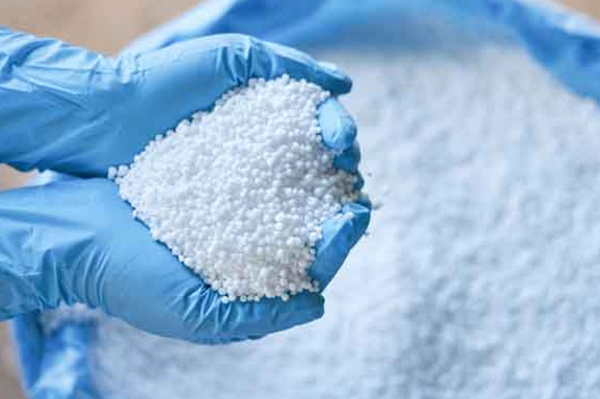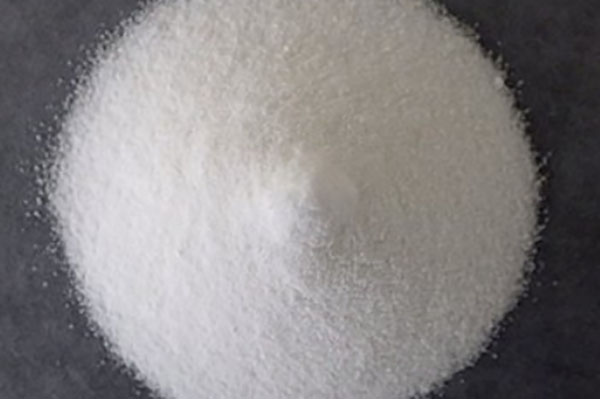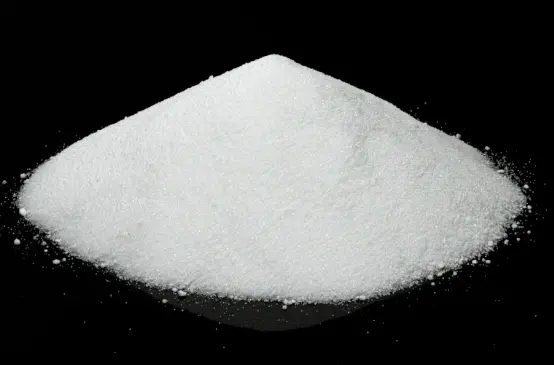Dive into the world of phosphate, a vital mineral, and its important compounds like magnesium phosphate and various phosphate salts. This article explores their fundamental roles in our bodies, their diverse uses in industry, and why understanding these substances matters profoundly for health, agriculture, and technology. It’s worth reading to grasp the critical impact of phosphate on daily life and numerous scientific fields, from basic biology to advanced material science. We’ll uncover the chemistry, the biological significance, and the practical applications of these ubiquitous compounds.
What Exactly is Phosphate and Why is it So Important?
Phosphate is a naturally occurring, charged particle (ion) that contains the element phosphorus. Specifically, it’s an anion, polyatomic ion, or a salt of phosphoric acid. In chemistry, you’ll often see it represented as PO₄³⁻. This little particle plays a huge role in all known forms of life! Think of it as a fundamental building block. Inorganic phosphate (often abbreviated as Pi) is crucial for energy transfer in cells. Adenosine triphosphate (ATP), the main energy currency of the cell, contains three phosphate groups. When one of these phosphate groups is broken off, energy is released, powering everything from muscle contraction to nerve impulses.
The importance of phosphate extends to the very blueprint of life. It forms the backbone of DNA and RNA, the molecules that carry genetic information. Without phosphate, these essential structures couldn’t exist. Furthermore, phosphate is a key component of cell membranes, helping to maintain their structure and function. The cellular uptake of phosphate is a tightly regulated process, ensuring cells have the amount of phosphate they need without accumulating too much. The role of phosphate is so central that life as we know it would be impossible without an adequate supply of this mineral. Its presence is critical for growth, maintenance, and repair of all body tissues.

Beyond its biological roles, phosphate compounds are found extensively in rocks and minerals. These geological deposits are the primary source for phosphorus used in fertilizers, which are vital for modern agriculture to increase phosphate content in soil, thereby boosting crop yields. The versatility of phosphate means it’s involved in countless chemical reactions and industrial processes. From water treatment to food additives, phosphate and its derivatives are everywhere, often working silently in the background to improve our lives. Understanding phosphate is understanding a cornerstone of both biology and industry.
The Fascinating World of Phosphate Salts: What Are They?
A salt, in chemistry, is an ionic compound that results from the neutralization reaction of an acid and a base. Phosphate salts are specifically those salts that contain the phosphate ion (PO₄³⁻). Because the phosphate ion has a -3 charge, it can combine with one, two, or three positively charged ions (cations) to form different types of salts. For example, with sodium (Na⁺), it can form monosodium phosphate (NaH₂PO₄), disodium phosphate (Na₂HPO₄), and trisodium phosphate (Na₃PO₄). Each of_ these sodium phosphate compounds has distinct properties and uses.
Phosphate salts are incredibly diverse. Common cations that form phosphate salts include sodium, potassium, calcium, and magnesium. You might encounter names like potassium phosphate (which can exist as monopotassium phosphate, dipotassium phosphate, or tripotassium phosphate), calcium phosphate (a major component of bones and teeth, including forms like dicalcium phosphate and tricalcium phosphate), and of course, magnesium phosphate. These salts are commonly found in nature and are also synthesized for a wide range of applications. The specific properties of a phosphate salt depend on the cation(s) it’s paired with and the number of those cations.
The utility of phosphate salts stems from their varied chemical characteristics. Some are highly soluble in water, while others are quite insoluble. They can act as buffering agents, helping to maintain a stable pH in a phosphate solution. In the food industry, certain phosphate salts are used as emulsifiers, sequestrants (to bind metal ions), or leavening agents. For instance, Sodium Hexametaphosphate is a versatile phosphate salt used in various food systems. The ability of phosphate to form these stable phosphate salts with different properties makes them indispensable in chemistry, biology, and industry.
Magnesium Phosphate Unveiled: A Closer Look at this Key Salt
Magnesium phosphate refers to a group of phosphate salts that contain both magnesium (Mg²⁺) and phosphate (PO₄³⁻) ions. There isn’t just one single compound called "magnesium phosphate"; rather, it’s a family of compounds. The most common forms include dimagnesium phosphate (MgHPO₄), often found with varying amounts of water of hydration, and trimagnesium phosphate (Mg₃(PO₄)₂). Mag phos is found in minerals, biological systems, and is also manufactured for various uses. Each form has unique characteristics and applications.
These magnesium phosphate compounds are generally white, odorless powders. Their solubility in water varies; for example, trimagnesium phosphate is practically insoluble in water but soluble in dilute acids. This property is important for its applications, such as its use as a food additive where it can serve as an anticaking agent, nutrient supplement, or pH regulator. As a source of both magnesium and phosphate, it can contribute to the dietary intake of these essential minerals. Understanding the specific type of magnesium phosphate is crucial as their properties and roles can differ significantly. For instance, Kands Chemical offers high-quality Trimagnessium Phosphate, which is valued for its purity and consistency in various applications.

In the context of health, magnesium phosphate is sometimes used in supplements or homeopathic remedies, though the scientific evidence for some specific traditional uses can vary. Biologically, magnesium and phosphate are both vital intracellular components. Magnesium is a cofactor for many enzymes, especially those involved in ATP metabolism (which, as we know, involves phosphate). Therefore, the interplay between magnesium and phosphate is significant at a cellular level. The various forms of magnesium phosphate salts highlight the versatility of phosphate in forming compounds with essential minerals.
How Does Our Body Handle Phosphate? The Journey of Ingested Phosphate
Our bodies are remarkably adept at managing phosphate levels. The journey of phosphate begins with ingestion. Dietary phosphate is abundant in many foods, including dairy products, meat, nuts, and whole grains. Approximately 60-70% of ingested phosphate is absorbed primarily in the small intestine. This intestinal phosphate absorption is an active process, meaning it requires energy, and can also occur passively depending on the concentration of phosphate in the gut. Vitamin D plays a crucial role in enhancing intestinal calcium absorption and also influences phosphate absorption.
Once absorbed, phosphate enters the bloodstream and is distributed throughout the body. The vast majority of the body’s phosphate (around 85%) is stored in bones and teeth, complexed with calcium as calcium phosphate salts like hydroxyapatite. The remaining phosphate is found in soft tissues and extracellular fluid. The kidneys are the primary regulators of phosphate balance in the body. They filter phosphate from the blood, and then a significant portion of this filtered phosphate reabsorbed back into the bloodstream in the renal tubules. The amount of phosphate reabsorbed is tightly controlled by hormones, primarily parathyroid hormone (PTH) and fibroblast growth factor 23 (FGF23). PTH generally decreases renal phosphate reabsorption, leading to increased phosphate excretion, while FGF23 also promotes phosphate excretion.
The maintenance of stable phosphate levels is critical. Deviations can lead to health problems. For instance, a decrease in serum phosphate below normal levels is termed hypophosphatemia, while high levels are hyperphosphatemia. The body also manages phosphate through transcellular shift of phosphate, where phosphate ions move between the intracellular and extracellular compartments. This can be influenced by factors like pH and insulin. The complex interplay of intestinal absorption of phosphate, distribution, and renal phosphate handling ensures that cellular phosphate needs are met while preventing harmful accumulations. The precise mechanisms of tubular phosphate transport and how conditions lead to phosphate wasting are complex, often detailed in scientific literature and resources where related Sciencedirect topics are explored by researchers.
What are the Signs and Risks of Phosphate Deficiency?
Phosphate deficiency, medically known as hypophosphatemia, occurs when there are abnormally low serum phosphate levels in the blood. While mild phosphate deficiency might not cause noticeable symptoms, moderate to severe deficiency can have significant health consequences. The symptoms can be widespread because phosphate is essential for so many bodily functions. Common signs include muscle weakness (as phosphate is crucial for ATP production, the energy for muscle contraction), bone pain or fractures (due to impaired bone mineralization, as calcium and phosphate are key bone components), and fatigue.
Other symptoms can involve the nervous system, leading to confusion, irritability, seizures, or even coma in severe cases. Respiratory failure can occur due to weakness of the diaphragm muscle. There can also be cardiac issues like arrhythmias. A severe phosphate deficiency can lead to rhabdomyolysis (breakdown of muscle tissue) and impaired white blood cell function, increasing the risk of infections. Total body phosphate depletion is a serious state that requires prompt medical attention. The risk of phosphate deficiency is higher in certain populations, such as malnourished individuals, alcoholics, patients with severe burns, or those with conditions causing increased phosphate excretion like Fanconi syndrome or hyperparathyroidism.
The causes of phosphate deficiency can be broadly categorized into three main areas:
- Decreased intestinal phosphate absorption: This can occur due to poor phosphate intake (e.g., starvation, malabsorption syndromes like celiac disease), or excessive use of phosphate binders (medications that bind phosphate in the gut, preventing its absorption, often used in kidney disease patients to manage high phosphate levels).
- Increased phosphate excretion: The kidneys might excrete too much phosphate. This can be due to hormonal imbalances (e.g., primary hyperparathyroidism), genetic disorders affecting renal phosphate reabsorption, or the use of certain diuretics. This is sometimes referred to as phosphate wasting.
- Transcellular shift of phosphate: Phosphate can move from the bloodstream into cells, leading to a temporary decrease in serum phosphate. This transcellular shift of phosphate can be triggered by refeeding syndrome (in severely malnourished patients), respiratory alkalosis, or administration of insulin or glucose, which stimulates cellular uptake of phosphate. Correcting a phosphate deficiency often involves oral phosphate or, in severe cases, intravenous phosphate replacement.
Taking Magnesium: How Does it Interact with Phosphate Levels in the Body?
Magnesium and phosphate are two of the most abundant intracellular minerals, and their metabolisms are intricately linked, although direct, strong interactions affecting each other’s serum levels are not as pronounced as, for example, calcium and phosphate. However, they share some common regulatory pathways and physiological roles. Taking magnesium supplements or having varying magnesium levels can indirectly influence or be associated with changes in phosphate balance, particularly within cells and in certain clinical situations. Both magnesium and phosphate are crucial for energy production (ATP metabolism), nucleic acid synthesis, and maintaining cell membrane integrity.
A significant magnesium deficiency can sometimes be associated with disturbances in other electrolytes, including potassium and calcium, and can potentially impact phosphate homeostasis indirectly. For instance, severe magnesium deficiency can impair parathyroid hormone (PTH) secretion or cause PTH resistance, which in turn could affect phosphate excretion and calcium and phosphate metabolism. However, typically, taking magnesium within recommended doses doesn’t directly cause major shifts in serum phosphate levels for most healthy individuals. The body has robust mechanisms to manage both phosphate levels and magnesium levels independently to a large extent.

It’s important to consider the forms of magnesium supplements. Some magnesium supplements, like magnesium citrate or magnesium oxide, primarily provide magnesium. Other compounds, like magnesium phosphate itself, would contribute both magnesium and phosphate to the body. When considering phosphorus and magnesium interactions, it’s often at the cellular level or in specific disease states (like kidney disease where both can be difficult to regulate) rather than a direct cause-and-effect from simply taking magnesium on phosphate levels. For example, both are reabsorbed in the renal tubules, and severe disruptions in kidney function can affect the handling of both minerals. Generally, a balanced intake of all minerals, including magnesium and phosphate, is key for optimal health.
Beyond Biology: The Wide-Ranging Industrial Uses of Phosphate and its Salts
While the biological role of phosphate is paramount, its chemical versatility makes phosphate and various phosphate salts indispensable in a multitude of industrial applications. One of the largest uses is in agriculture. Phosphate is a key component of fertilizers, often in forms like ammonium phosphate (e.g., monoammonium phosphate, diammonium phosphate) or superphosphate. These compounds provide essential phosphorus to plants, promoting root development, seed formation, and overall crop yield. Without phosphate-based fertilizers, global food production would be significantly lower.
The food industry extensively utilizes phosphate salts for various purposes. They act as:
- Buffering agents: To control acidity and alkalinity (e.g., disodium hydrogen phosphate).
- Emulsifiers: To stabilize mixtures of oil and water, common in processed cheeses and meats.
- Sequestrants: To bind metal ions that can cause spoilage or discoloration.
- Leavening agents: In baking powders, reacting to produce carbon dioxide and make baked goods rise (e.g., sodium acid pyrophosphate).
- Moisture retainers: In processed meats to improve texture and juiciness (e.g., sodium tripolyphosphate).
- Nutrient supplements: To fortify foods with phosphorus (e.g., calcium phosphate).
Kands Chemical, for example, supplies various food-grade phosphate salts like Dipotassium Phosphate, known for its role in stabilizing dairy products and as a nutrient.
Beyond food and agriculture, phosphate compounds are crucial in other sectors. Trisodium phosphate was historically common in detergents and cleaning agents for its ability to soften water and remove grease, though environmental concerns about phosphate runoff leading to eutrophication have led to reduced use in some regions. Phosphate-based materials are used in the manufacture of flame retardants, dental products (like dicalcium phosphate in toothpaste), and even in water treatment to prevent corrosion and scale formation. Certain phosphate compounds like aluminum phosphate or ferric phosphate can be used as catalysts or in specialized applications. The wide array of phosphate salts, including magnesium phosphate, potassium phosphate, and various sodium phosphate species, each with unique properties, makes them foundational to many industrial processes and products.
Can Too Much Phosphate Be Harmful? Understanding High Phosphate Levels
Yes, having too much phosphate in the body, a condition known as hyperphosphatemia, can indeed be harmful. While phosphate is essential, high phosphate levels can disrupt the body’s delicate mineral balance and lead to serious health complications. One of the primary concerns with chronically elevated phosphate is its interaction with calcium. When phosphate levels are high, phosphate can bind with calcium in the blood, forming calcium and phosphate salts. These insoluble compounds can deposit in soft tissues throughout the body, a process called soft tissue calcification.
This soft tissue calcification can occur in blood vessels (contributing to atherosclerosis and increasing the risk of cardiovascular disease), joints (causing pain and stiffness), skin (leading to itchy lesions), and even internal organs like the heart and lungs, impairing their function. High levels of phosphate are particularly a concern for individuals with chronic kidney disease (CKD). Healthy kidneys play a vital role in phosphate excretion, so when kidney function declines, phosphate can accumulate in the blood. This is why CKD patients often need to follow a low-phosphate diet and may be prescribed phosphate binders to reduce intestinal absorption of phosphate.
Beyond soft tissue calcification, high phosphate can also stimulate the parathyroid glands to release more parathyroid hormone (PTH). Chronically elevated PTH can lead to renal osteodystrophy, a bone disease characterized by abnormal bone turnover and mineralization, making bones weaker and more prone to fractures. While acute, severe hyperphosphatemia can cause symptoms like muscle cramps, tetany, and numbness due to a rapid drop in blood calcium, chronic hyperphosphatemia is often asymptomatic until complications like calcification develop. Therefore, monitoring and managing phosphate levels, especially in at-risk populations, is crucial to prevent long-term health issues. The amount of phosphate in the diet needs careful consideration for these individuals.
The Critical Link Between Calcium and Phosphate: A Delicate Balance
The relationship between calcium and phosphate in the body is one of the most critical and tightly regulated mineral partnerships. These two minerals are the primary components of bones and teeth, forming a crystalline structure called hydroxyapatite, which gives bone its strength and rigidity. About 85% of the body’s phosphate and 99% of its calcium are stored in the skeleton, highlighting their interdependence in skeletal health. Maintaining a stable calcium and phosphate product (the mathematical product of their concentrations in the blood) is essential to prevent abnormal deposition of calcium phosphate salts in soft tissues.
The levels of calcium and phosphate in the blood are reciprocally regulated by several hormones, primarily parathyroid hormone (PTH), vitamin D, and fibroblast growth factor 23 (FGF23). For example:
- PTH: When blood calcium is low, PTH is released. It increases calcium reabsorption in the kidneys, stimulates vitamin D activation (which boosts intestinal calcium absorption and phosphate absorption), and promotes the release of calcium and phosphate from bones. Interestingly, PTH also increases phosphate excretion by the kidneys, which helps to prevent high phosphate levels when calcium is being mobilized from bone.
- Vitamin D: Active vitamin D (calcitriol) increases the absorption of both calcium and phosphate from the intestines.
- FGF23: This hormone is released primarily by bone cells in response to high phosphate levels. FGF23 acts on the kidneys to increase phosphate excretion and decrease the production of active vitamin D, thereby reducing intestinal phosphate absorption.
Disruptions in this delicate balance between calcium and phosphate can lead to various health problems. For example, if phosphate levels become too high (hyperphosphatemia), it can lead to a decrease in blood calcium (hypocalcemia) as phosphate binds with calcium. Conversely, low phosphate (hypophosphatemia) can sometimes be associated with high blood calcium (hypercalcemia) under certain conditions, though the relationships are complex. The body’s intricate hormonal systems work tirelessly to keep phosphate and calcium within their optimal ranges, ensuring proper bone health and preventing dangerous soft tissue calcification. Understanding this link is vital in managing conditions like kidney disease, bone disorders, and parathyroid gland dysfunctions.
Sourcing and Understanding Phosphate Compounds: What You Need to Know
When sourcing phosphate compounds like magnesium phosphate, sodium phosphate, or potassium phosphate, several factors are crucial for ensuring you receive high-quality, suitable materials for your specific application, whether it’s for food production, industrial processes, or laboratory use. The purity of the phosphate salt is paramount. Impurities can affect the performance of the product, introduce unwanted side reactions, or even be harmful if the compound is intended for food or pharmaceutical applications. Reputable suppliers will provide a Certificate of Analysis (CoA) detailing the phosphate content, levels of impurities, and physical characteristics.
Understanding the specific grade of the phosphate compound is also essential. Industrial grade, food grade (e.g., FCC – Food Chemicals Codex), and pharmaceutical grade (e.g., USP – United States Pharmacopeia) have different purity standards and permissible impurity levels. For instance, if you’re looking for Disodium Phosphate for use in food systems, it must meet stringent food-grade specifications. Similarly, chemicals like ammonium sulfate, even if not a phosphate, have different grades for agricultural versus technical uses.
Finally, consider the supplier’s reliability, consistency in product quality, and their understanding of the materials they provide. A knowledgeable supplier can offer guidance on the appropriate phosphate based product for your needs, whether it’s dihydrogen phosphate, monohydrogen phosphate, inorganic phosphate solutions, or complex phosphate salts like sodium hexametaphosphate. They should also be transparent about their manufacturing processes and quality control measures. For businesses needing consistent and reliable chemical supplies, partnering with an experienced manufacturer like Kands Chemical ensures access to a wide range of phosphate products that meet high standards. This is crucial because variations in the amount of phosphate or presence of contaminants in a phosphate solution or solid can significantly impact end-product quality and safety. Whether it’s dicalcium phosphate for animal feed or specialized citrate salts for buffering, quality sourcing is key.
Key Takeaways on Phosphate and Phosphate Salts:
- Phosphate (PO₄³⁻) is an essential ion vital for life, playing key roles in energy (ATP), DNA/RNA structure, and cell membranes.
- Phosphate salts are compounds formed by phosphate ions with cations like sodium, potassium, calcium, and magnesium. Examples include sodium phosphate, potassium phosphate, and magnesium phosphate.
- Magnesium phosphate (e.g., trimagnesium phosphate) is a salt important for nutrition and various industrial applications.
- The body tightly regulates phosphate levels through intestinal absorption, bone storage, and renal phosphate excretion, influenced by hormones like PTH and vitamin D.
- Phosphate deficiency (hypophosphatemia) can cause muscle weakness, bone pain, and neurological issues, resulting from poor intake, increased phosphate excretion, or transcellular shift of phosphate.
- Magnesium and phosphate are both crucial intracellular minerals; significant magnesium deficiency can indirectly affect phosphate homeostasis.
- Industrial uses of phosphate and its salts are vast, including fertilizers (e.g., ammonium phosphate), food additives (e.g., to adjust pH, emulsify, or as a nutrient like calcium phosphate), and detergents.
- High phosphate levels (hyperphosphatemia) can be harmful, leading to soft tissue calcification and bone problems, especially in kidney disease. Management includes diet and phosphate binders.
- The balance between calcium and phosphate is critical for bone health and preventing calcification, regulated by PTH, vitamin D, and FGF23.
- When sourcing phosphate compounds, consider purity, grade (food, industrial), and supplier reliability. Understanding the specific phosphate content and characteristics is crucial.
Post time: May-23-2025










